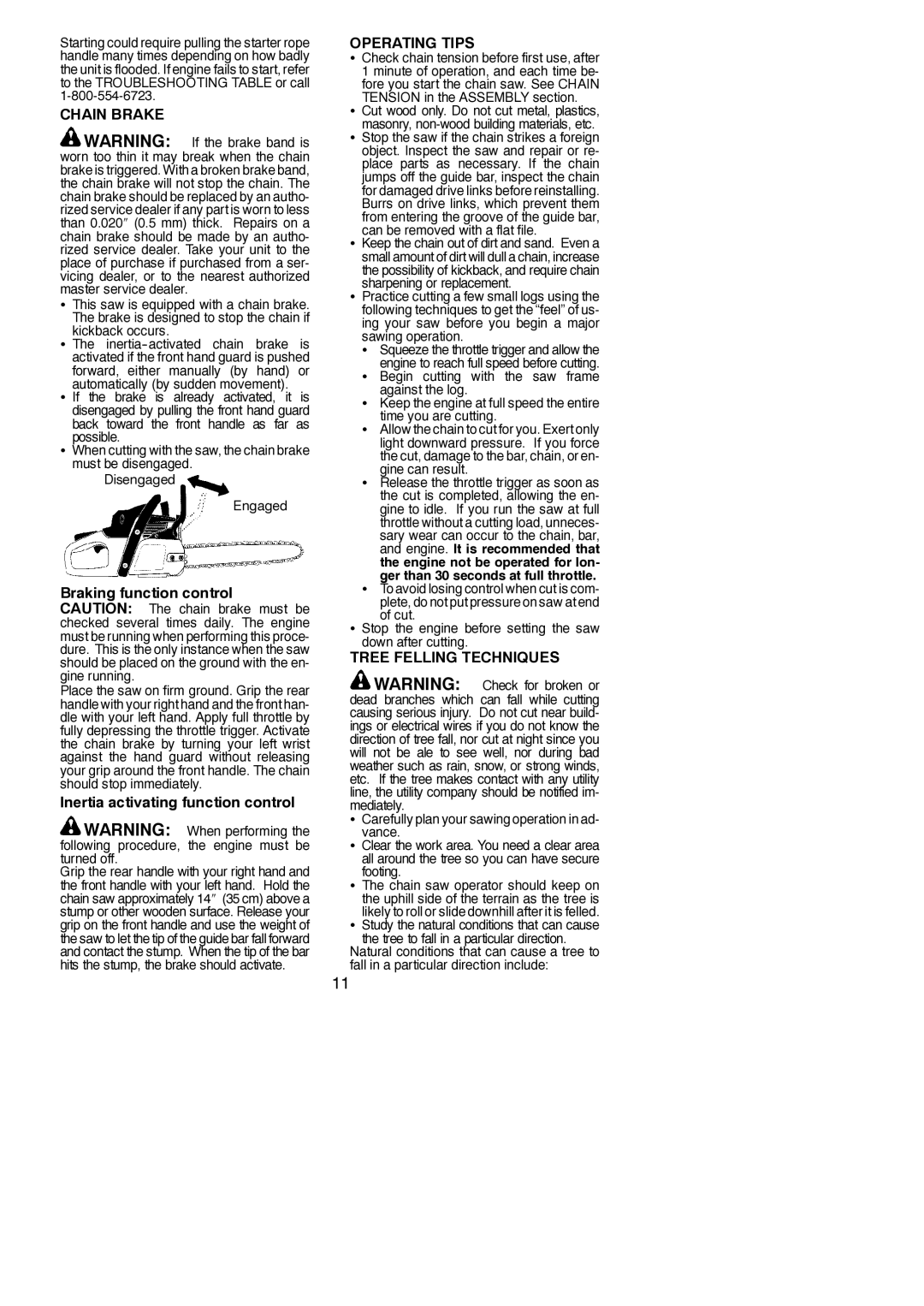952802151, 545186809 specifications
The Poulan 545186809, 952802151 is a robust and efficient chainsaw designed for both professional and residential use. This model seamlessly blends innovation with power, making it a reliable tool for a variety of cutting tasks, from light pruning to heavy-duty tree felling.One of the standout features of the Poulan 545186809 is its powerful engine. Equipped with a 45cc engine, it delivers sufficient power to handle tough cutting jobs while maintaining optimal fuel efficiency. The engine operates smoothly, reducing vibrations and minimizing user fatigue during prolonged use. This makes it an ideal choice for those who require a dependable chainsaw for extended periods.
The design of the Poulan 545186809 also incorporates advanced technologies aimed at enhancing user experience. An automatic oiler system ensures that the chain remains lubricated at all times, reducing friction and wear. This feature not only prolongs the life of the chain but also promotes smoother cuts. The tool-less chain tensioning mechanism allows users to adjust the chain tension quickly and conveniently without the need for additional tools— an essential feature for on-the-go adjustments.
Safety is a primary consideration with the Poulan 545186809. The chainsaw is equipped with an inertia-activated chain brake, which stops the chain immediately in the event of kickback, safeguarding the operator from injuries. Additionally, the model features a sturdy front guard that offers extra protection while maintaining visibility of the cutting area.
Another notable characteristic is its lightweight and ergonomic design. Weighing in at just over 10 pounds, it is manageable for most users, and the cushioned grip provides comfort, reducing strain on the hands. The compact build also allows for easy maneuverability, making it perfect for tight spaces.
In terms of maintenance, the Poulan 545186809 is user-friendly. The air filter is easily accessible for cleaning or replacement, thus ensuring the engine operates at peak performance.
Overall, the Poulan 545186809, 952802151 is a powerful, versatile, and safe chainsaw that can tackle various cutting tasks with ease. Its combination of innovative features, safety mechanisms, and user comfort makes it an excellent choice for anyone looking to invest in a high-quality chainsaw. Whether for professional landscaping or casual home use, this model stands out as a reliable tool in the world of outdoor equipment.

